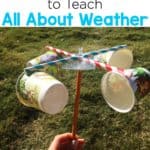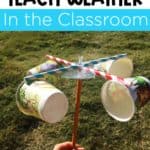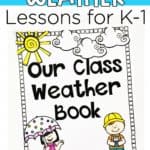

One of my favorite science topics to teach is the weather unit. Because weather is all around us, it’s fun and easily observable for our young scientists. But, here’s the problem I used to run in to: there are so many different directions you can take when it comes to teaching all about weather, not to mention all of the weather activities to choose from. You can introduce daily weather, meteorologists, types of storms, water cycle, clouds, tools, and the list goes on and on. It was so easy for me to get off-track and down a rabbit hole during this science unit.
So, I decided to create my own organized and engaging weather science unit. I mapped out a week-long teaching plan to help me make sure I would hit the standards, include hands-on activities, and differentiate for the learners in my classroom.
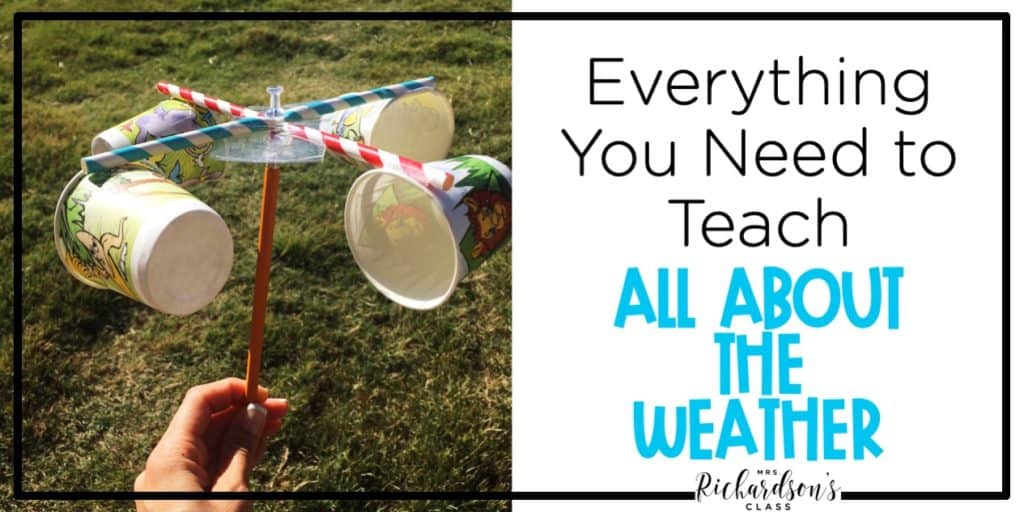
You can check out my weather unit HERE. These top ten components are what make this the ultimate resource to help you teach all about weather.
The teaching plan for the week helps you implement teaching these concepts:
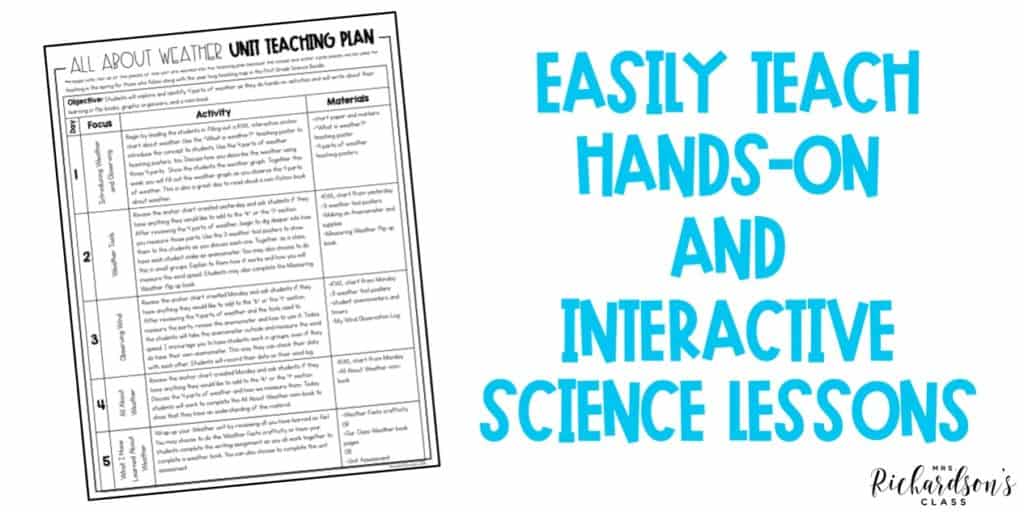
The teaching plan will help you stay organized and effectively teach your standards for weather while implementing fun, engaging activities. This plan will help you easily create lesson plans perfect for your students. Not all of the activities are included in the teaching plan because there are just so many!
I included real-life photos of important vocabulary words to help your students understand some abstract concepts. I also included smaller vocabulary cards in case you want to use them for a science word wall. Providing strong visual support helps your ELLs develop strong academic language, too. At this age, all students can benefit from visual support to develop their language and vocabulary skills.
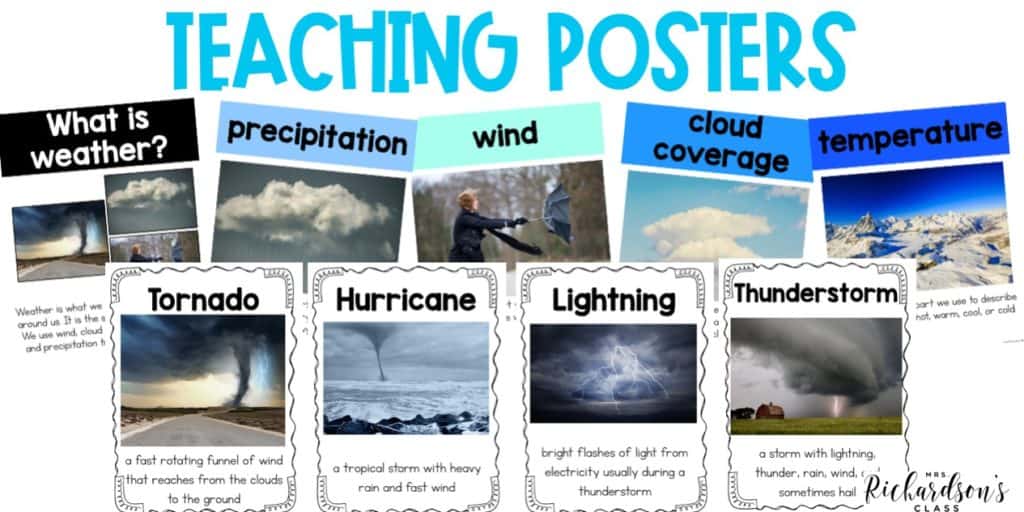
This weather unit is packed full of a variety of graphic organizers for you to use with your students. You can use them to assess students’ learning as you go throughout the week and have students document their learning. Sometimes I have students put them in their interactive notebooks, and other times we projected them and completed them as a whole group. You can check out my favorite interactive notebook tips HERE and read more about writing in science HERE.
Hands-on activities and science experiments bring this unit to life. I love watching my students’ eyes light up as soon as they hear they get to do a science experiment. The weather unit has an experiment and a few other hands-on activities to help your little scientists learn and grow.
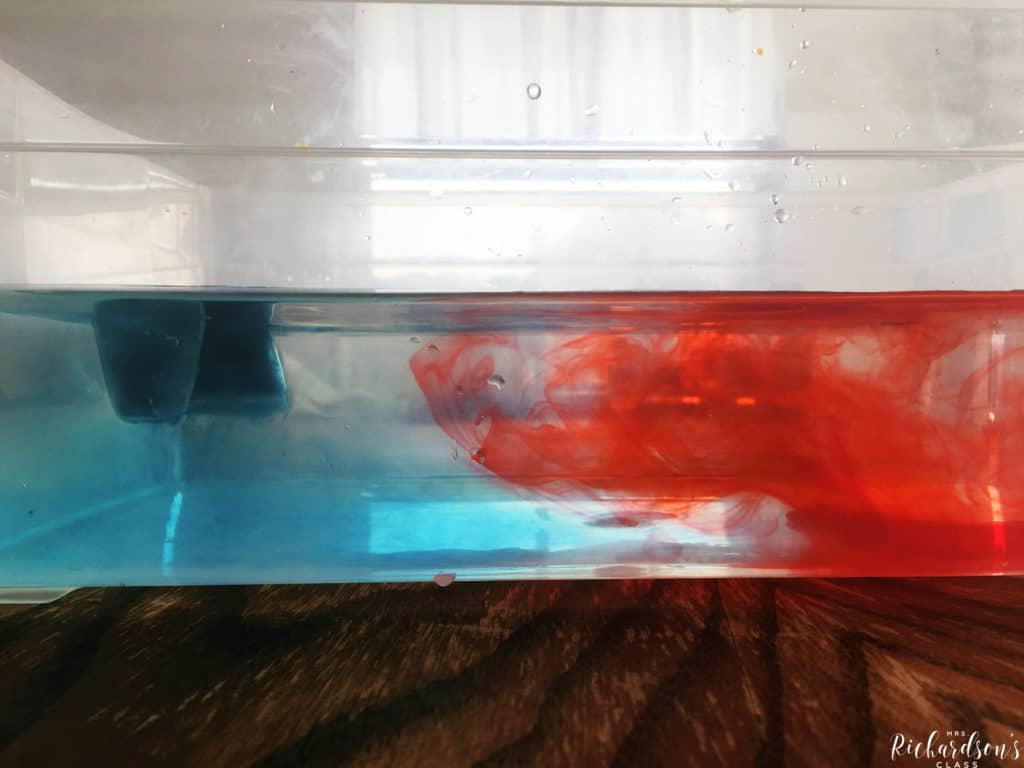
You guys know I love a good anchor chart. I use them all the time! They are a fantastic tool to help keep current learning accessible, make thinking visual, and encourage students to engage in writing with you. I included everything you’ll need for two different anchor charts in the All About Weather unit. You can read more about anchor charts HERE.
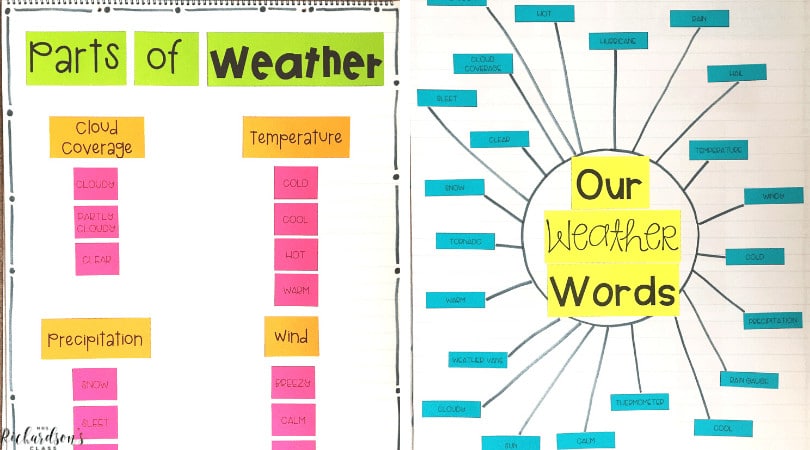
Included in the weather unit is an assessment to make checking for understanding as easy as possible. It’s very student-friendly and simple for you to evaluate.
One effective way to help students develop a deeper understanding of science topics is to integrate science throughout the day. You can do this with interactive read alouds and shared reading. You’ll find a list of read aloud suggestions and everything you need for a week of shared reading lessons, including a teaching plan. There are two versions of the poem, a pocket chart sorting activity, and two student phonics activity pages.
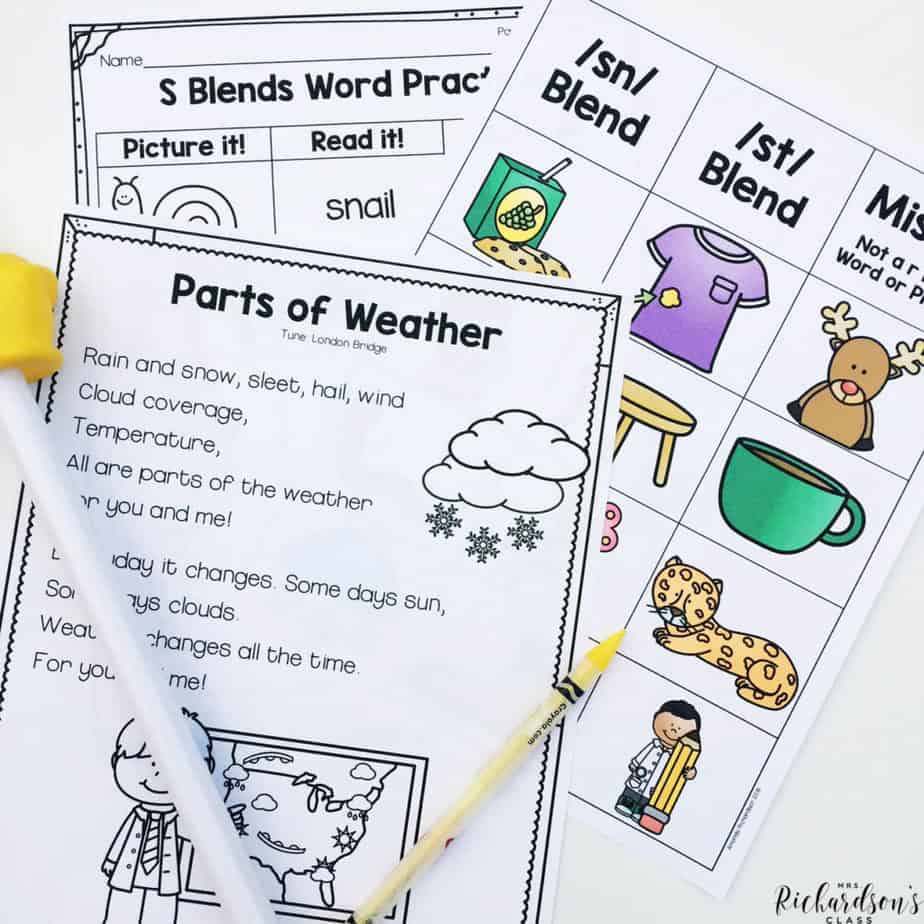
The mini-book has something for students to do on each page. When the book is done, you can have students take it home to reread or put it in their book boxes to reread at school. The class book is always so fun to read! Class books are a great way to include writing about science in a way that makes students excited to write.
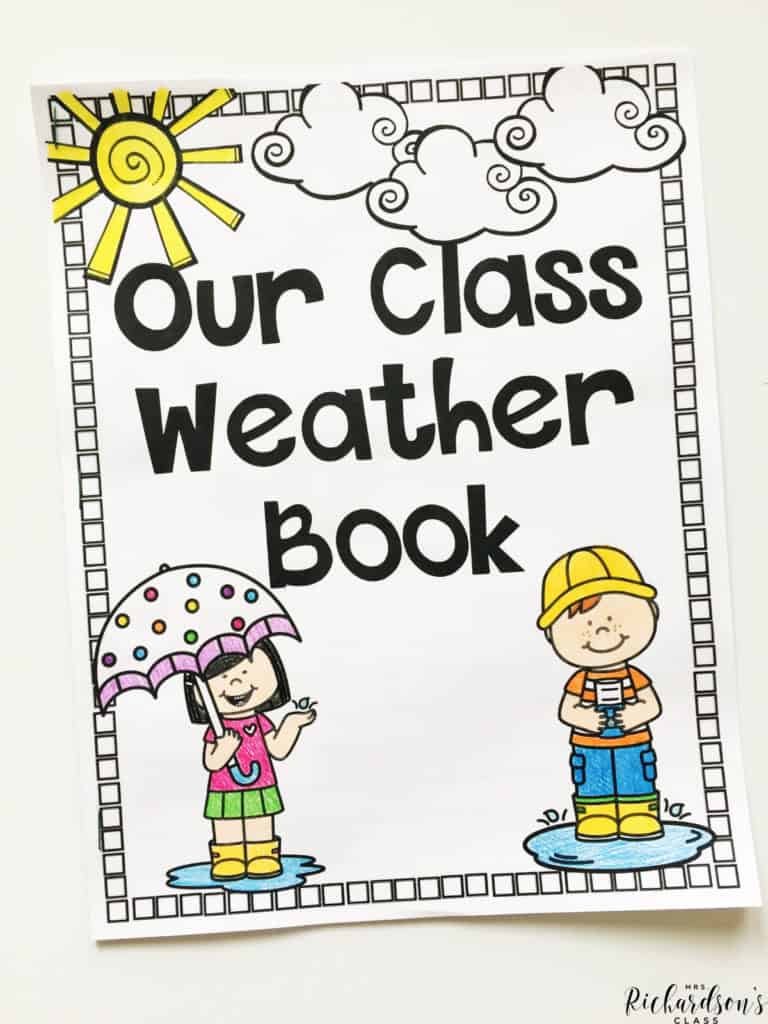
It can be so difficult to squeeze in time for crafting and art projects during the day. One of my favorite ways to get to do crafting in the classroom is to make purposeful crafts that integrate learning. The weather unit includes a craft that you can use to assess learning and makes a great display!
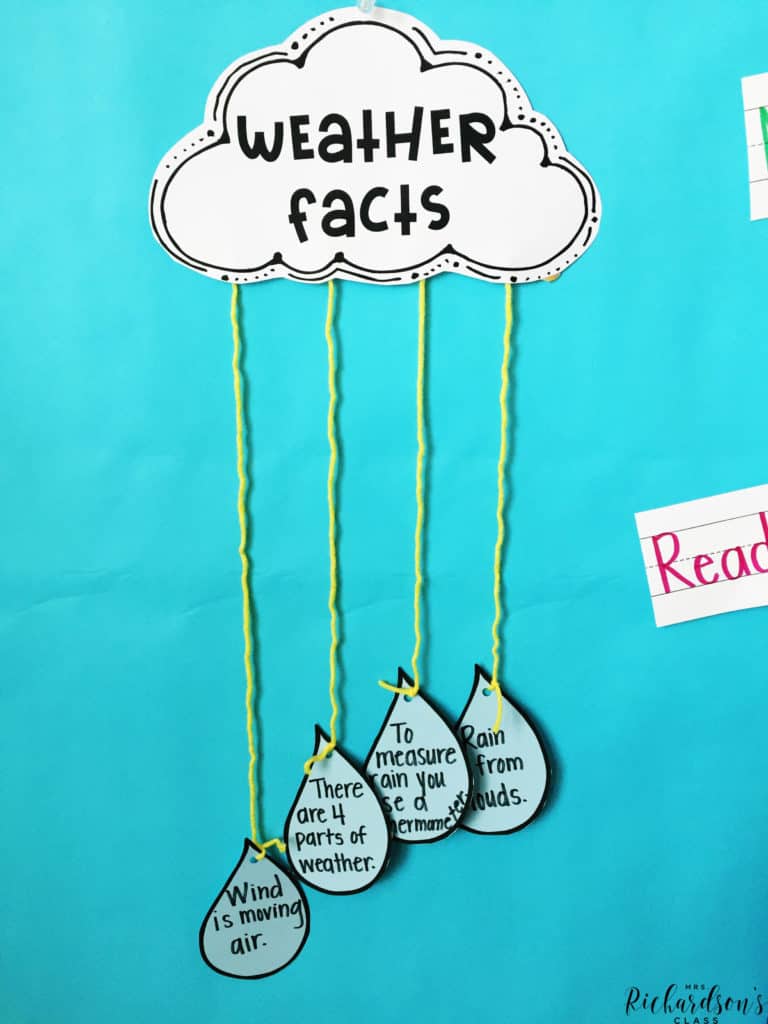
This all-inclusive weather unit has more than enough activities for you to teach all about the types of weather, weather tools, clouds, the water cycle, and weather during each season. You can follow the teaching plan or implement any variety of the activities to best meet the needs of your learners. I like to use the extra activities to reteach after assessing if needed. You can also easily extend this unit to a two-week unit if your district maps out your science units that way.
If you want to have everything you’ll need to teach weather and have teaching plan to make lesson planning easier, head over and grab your own All About Weather unit.
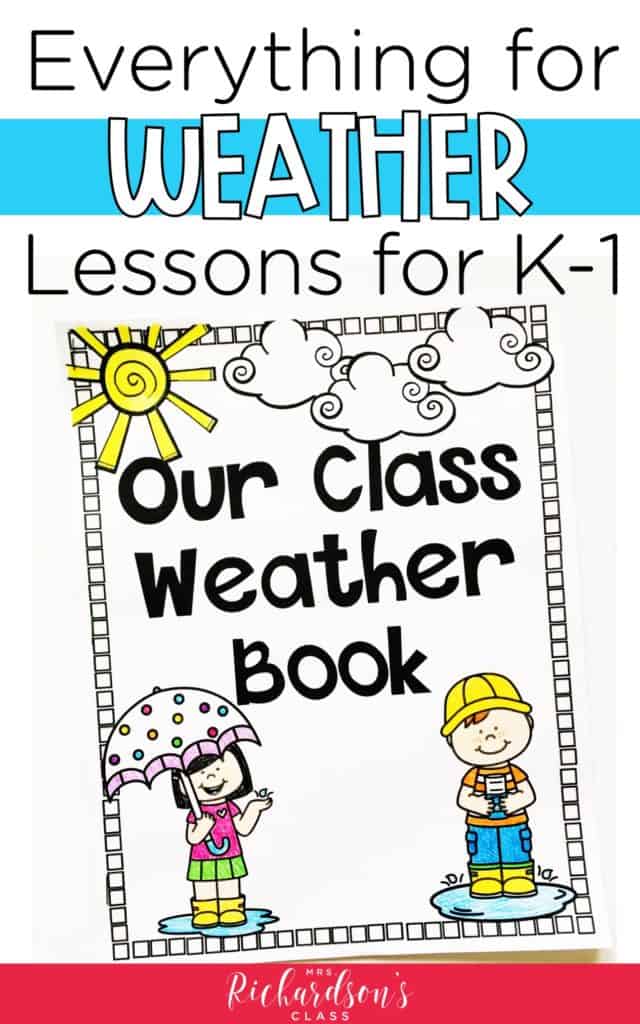
pin it
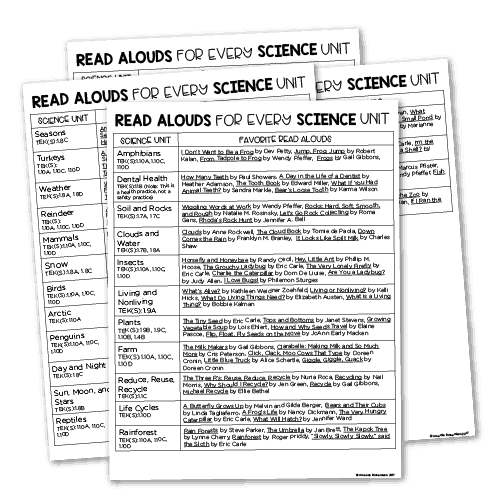

I’m a K-1 teacher who is passionate about making lessons your students love and that are easy to implement for teachers. Helping teachers like you navigate their way through their literacy block brings me great joy. I am a lifelong learner who loves staying on top of current literacy learning and practices. Here, you’ll find the tools you need to move your K-2 students forward!


| Cookie | Duration | Description |
|---|---|---|
| cookielawinfo-checkbox-analytics | 11 months | This cookie is set by GDPR Cookie Consent plugin. The cookie is used to store the user consent for the cookies in the category "Analytics". |
| cookielawinfo-checkbox-functional | 11 months | The cookie is set by GDPR cookie consent to record the user consent for the cookies in the category "Functional". |
| cookielawinfo-checkbox-necessary | 11 months | This cookie is set by GDPR Cookie Consent plugin. The cookies is used to store the user consent for the cookies in the category "Necessary". |
| cookielawinfo-checkbox-others | 11 months | This cookie is set by GDPR Cookie Consent plugin. The cookie is used to store the user consent for the cookies in the category "Other. |
| cookielawinfo-checkbox-performance | 11 months | This cookie is set by GDPR Cookie Consent plugin. The cookie is used to store the user consent for the cookies in the category "Performance". |
| viewed_cookie_policy | 11 months | The cookie is set by the GDPR Cookie Consent plugin and is used to store whether or not user has consented to the use of cookies. It does not store any personal data. |
